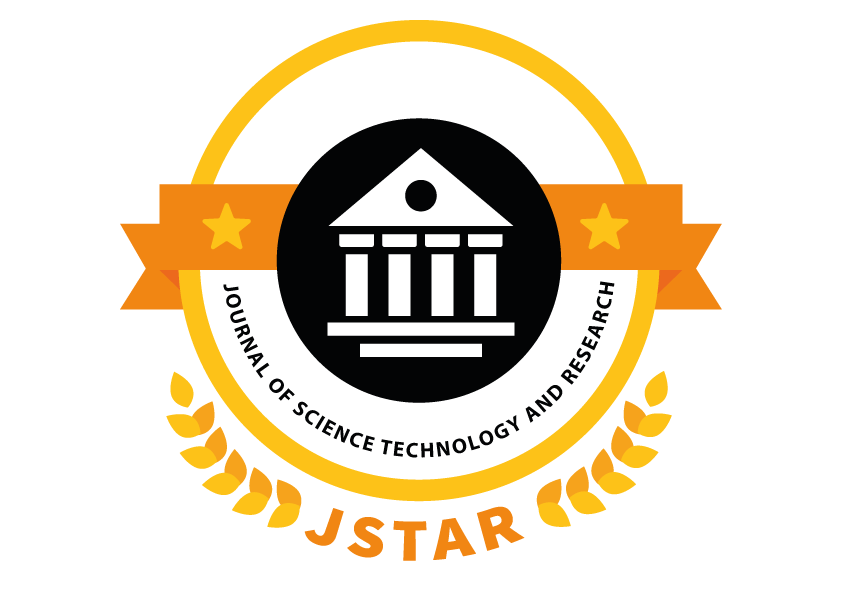Author:
Terefe JimaPublished in
Journal of Science Technology and Research( Volume , Issue )
1. A.S. Kannan. 2012. Existence and Benefits From Linkages Between University And
Industry In Ethiopia, International Journal of Advanced Research in Management
(IJARM), 3(2): 50-62
2. AAU & AUCC. (2012). strengthening university-industry linkages in Africa: A study on
institutional capacities and gaps.
3. Abraham A.A.2016. University- Industry Linkage Practices, Determinants and
Challenges Theoretical and Empirical Article Review: Lessons for Effective and
Successful Collaboration, International Journal of Research in Management, Economics
and Commerce Vol. 6 Issue 03
4. Abrham S. The link between University and industry: The Case of Addis Ababa Institute
of technology, 2013
5. Association of African Universities (AAU, 2012). Strengthening university-industry
linkages in Africa: A study on institutional capacities and gaps.
6. Barnes, t; pashby, I; Gibbons, A. 2002. ―Effective University –Industry Interaction: A
Multicase Evaluation of Collaborative R&D Projects‖. European Management Journal
Vol. 20(3), pp. 272–285.
7. Belayneh T .The Link between University Research and Industry: The Case of Addis
Ababa Institute of Technology (AAIT), 2014
8. Bruneel, J. et al. (2010). Investigating the factors that diminish the barriers to university
industry collaboration. Research Policy, 39, 858-868.
9. Bruneel, J., D’Este, P. & Salter, A. (2010). Investigating the Factors that Diminish the
Barriers to University-Industry Collaboration, Research Policy.
10. CYERT, R. M; Goodman, P. S. 1997. ―Creating Effective University-Industry Alliances:
An Organizational Learning Perspective.‖ Organizational Dynamics, pp. 45-57.
11. D’Este P, Patel P (2007). University–industry linkages in the UK: What are the factors
underlying the variety of interactions with industry? Res. Policy, 36: 1295-1313.
12. De Fuentes C, Dutrénit G. Geographic proximity and university–industry interaction: The
case of Mexico. The Journal of Technology Transfer. 2014
13. Debella D.B, Investigating Critical Factors Affecting the Linkage between Researchers
and Farmers in Ethiopia: From Agricultural Innovation Perspective, 2012
ABSTRACT:
This study investigates the determinants of university-industry linkage with a focus on knowledge and technology transfer. It examines Mizan Tepi and Wollega Universities, where industry collaboration remains underdeveloped. The research uses a mixed-method approach combining surveys, interviews, and document analysis. Researchers collected data from 235 faculty members and 11 industry representatives. The findings show limited engagement beyond internships, training, and minor consultancies. Major challenges include insufficient research funding, poor laboratory facilities, lack of incentives for applied research, and weak industry capacity to absorb research outcomes. Additionally, low trust between universities and industries and ineffective policy frameworks hinder progress. The results emphasize the need for stronger partnerships and active policy enforcement. Universities must promote applied research, while industries should invest in R&D collaboration. By addressing these determinants of university-industry linkage, both sectors can unlock innovation and drive sustainable development. This study offers evidence-based insights to strengthen university-industry relations in developing nations.
INTRODUCTION:
In today’s knowledge-driven economy, the determinants of university-industry linkage play a crucial role in shaping innovation and national development. Strong collaboration between higher education institutions and industries ensures the effective transfer of research, technology, and human capital. However, such linkage remains weak in many developing countries, including Ethiopia. Despite growing recognition of its importance, few empirical studies have investigated the institutional and structural barriers impacting these linkages. This study focuses on Mizan Tepi and Wollega Universities, aiming to examine the key factors that influence knowledge and technology exchange with surrounding industries. While universities attempt to engage in applied research and industry partnerships, their efforts are often constrained by limited resources, lack of incentives for researchers, and minimal involvement from industrial stakeholders. Understanding the determinants of university-industry linkage is essential to creating practical policy frameworks that promote collaboration, improve innovation systems, and contribute meaningfully to socio-economic progress in emerging economies.

